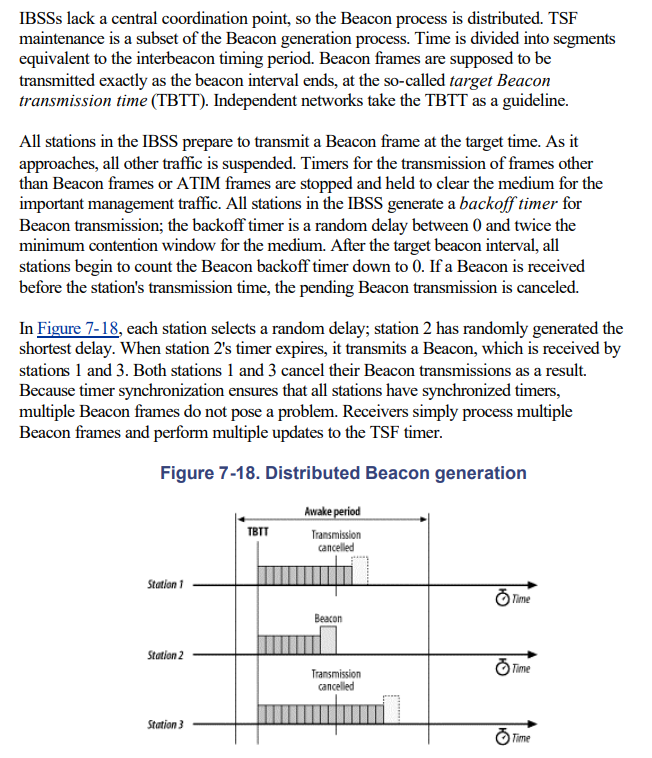Management Operations - LogeshVel/802.11 GitHub Wiki
Scanning
Before using any network, you must first find it. With wired networks, finding the network is easy: look for the cable or a jack on the wall. In the wireless world, stations must identify a compatible network before joining it. The process of identifying existing networks in the area is called scanning.
BSSType
independent, infrastructure, or both.
Scanning can specify whether to seek out independent ad hoc networks, infrastructure networks, or all networks.
BSSID
The device can scan for a specific network to join (individual) or for any network that is willing to allow it to join (broadcast).
SSID
Network name
The SSID assigns a string of bits to an extended service set. Most products refer to the SSID as the network name because the string of bits is commonly set to a human-readable string. Clients wishing to find any network should set this to the broadcast SSID.
ScanType
- Active
Active scanning uses the transmission of Probe Request frames to identify networks in the area.
- Passive
Passive scanning saves battery power by listening for Beacon frames.
ChannelList
Scans must either transmit a Probe Request or listen on a channel for the existence of a network. 802.11 allows stations to specify a list of channels to try. Products allow configuration of the channel list in different ways. What exactly constitutes a channel depends on the physical layer in use. With direct-sequence products, it is a list of channels. With frequency-hopping products, it is a hop pattern.
ProbeDelay
This is the delay, in microseconds, before the procedure to probe a channel in active scanning begins. This delay ensures that an empty or lightly loaded channel does not completely block the scan.
MinChannelTime and MaxChannelTime
These values, specified in time units (TUs), specify the minimum and maximum amount of time that the scan works with any particular channel.
Passive Scanning
Passive scanning saves battery power because it does not require transmitting. In passive scanning, a station moves to each channel on the channel list and waits for Beacon frames. Any Beacons received are buffered to extract information about the BSS that sent them.
In the passive scanning procedure, the station sweeps from channel to channel and records information from any Beacons it receives. Beacons are designed to allow a station to find out everything it needs to match parameters with the basic service set (BSS) and begin communications.
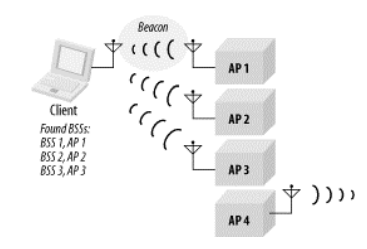
Active Scanning
In active scanning, a station takes a more assertive role. On each channel, Probe Request frames are used to solicit responses from a network with a given name. Rather than listening for that network to announce itself, an active scan attempts to find the network.
Stations using active scanning employ the following procedure for each channel in the channel list:
-
Move to the channel and wait for either an indication of an incoming frame or for the ProbeDelay timer to expire. If an incoming frame is detected, the channel is in use and can be probed. The timer prevents an empty channel from blocking the entire procedure; the station won't wait indefinitely for incoming frames.
-
Gain access to the medium using the basic DCF access procedure and send a Probe Request frame.
-
Wait for the minimum channel time, MinChannelTime, to elapse.
a. If the medium was never busy, there is no network. Move to the next channel.
b. If the medium was busy during the MinChannelTime interval, wait until the maximum time, MaxChannelTime, and process any Probe Response frames.
Scan Report
A scan report is generated at the conclusion of a scan. The report lists all the BSSs that the scan discovered and their parameters. The complete parameter list enables the scanning station to join any of the networks that it discovered.
Beacon interval
Each BSS can transmit Beacon frames at its own specific interval, measured in TUs.
DTIM period
DTIM frames are used as part of the power-saving mechanism.
Timing parameters
Two fields assist in synchronizing the station's timer to the timer used by a BSS. The Timestamp field indicates the value of the timer received by the scanning station; the other field is an offset to enable a station to match timing information to join a particular BSS.
PHY parameters, CF parameters, and IBSS parameters
Channel information is included in the physical-layer parameters.
BSSBasicRateSet
The basic rate set is the list of data rates that must be supported by any station wishing to join the network. Stations must be able to receive data at all the rates listed in the set. The basic rate set is composed of the mandatory rates in the Supported Rates information element of management frames
Joining
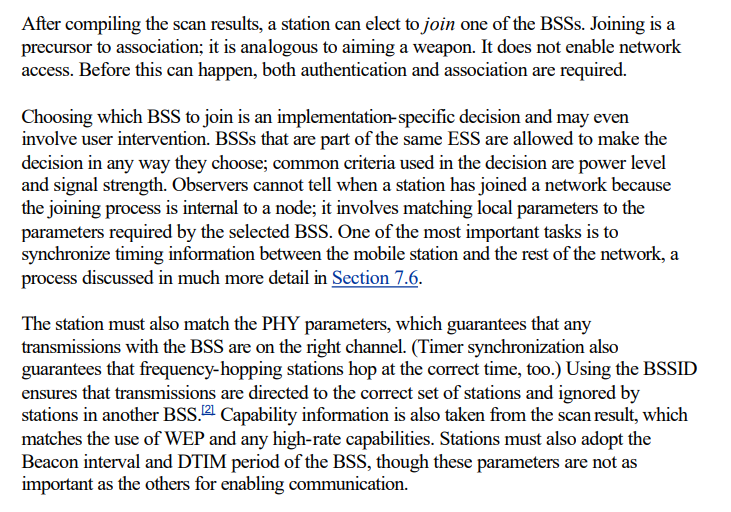
Authentication
Open-System Authentication

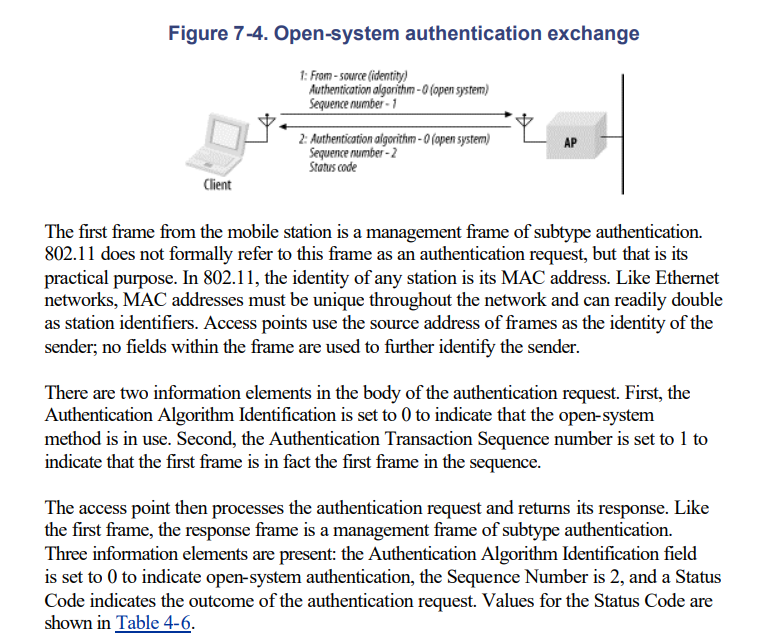
Shared-Key Authentication
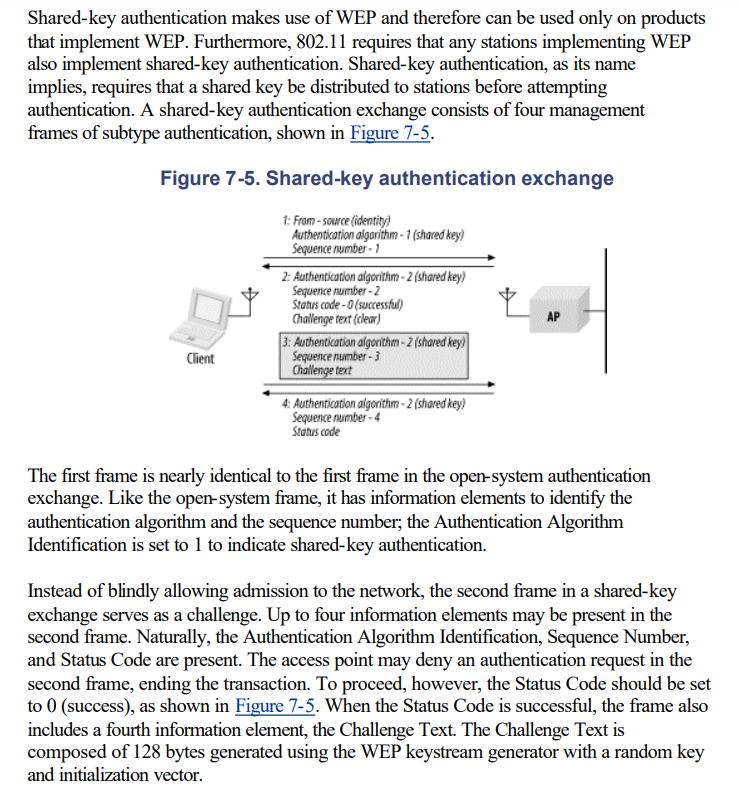
Preauthentication
Stations must authenticate with an access point before associating with it, but nothing in 802.11 requires that authentication take place immediately before association. Stations can authenticate with several access points during the scanning process so that when association is required, the station is already authenticated. This is called preauthentication.
As a result of preauthentication, stations can reassociate with access points immediately upon moving into their coverage area, rather than having to wait for the authentication exchange.
Association
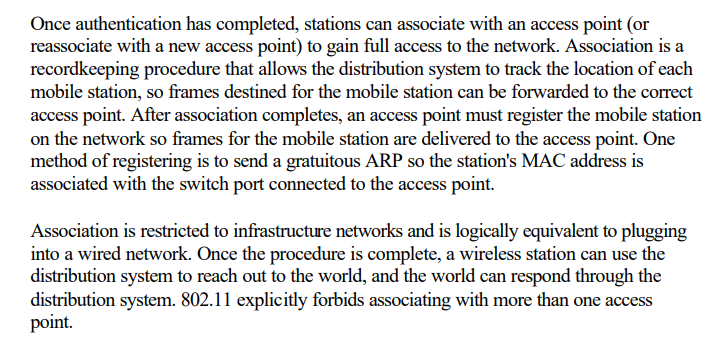
Association procedure
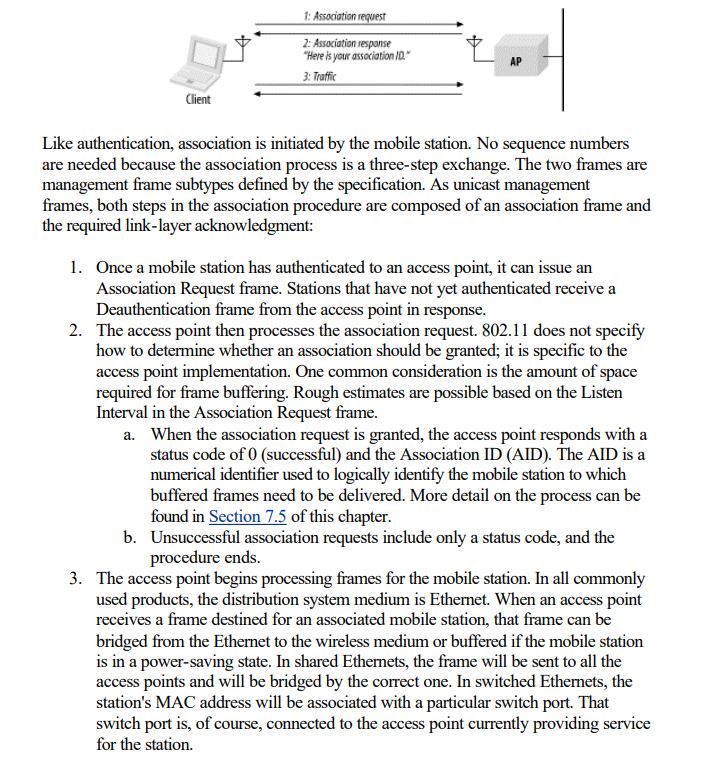
Reassociation Procedure
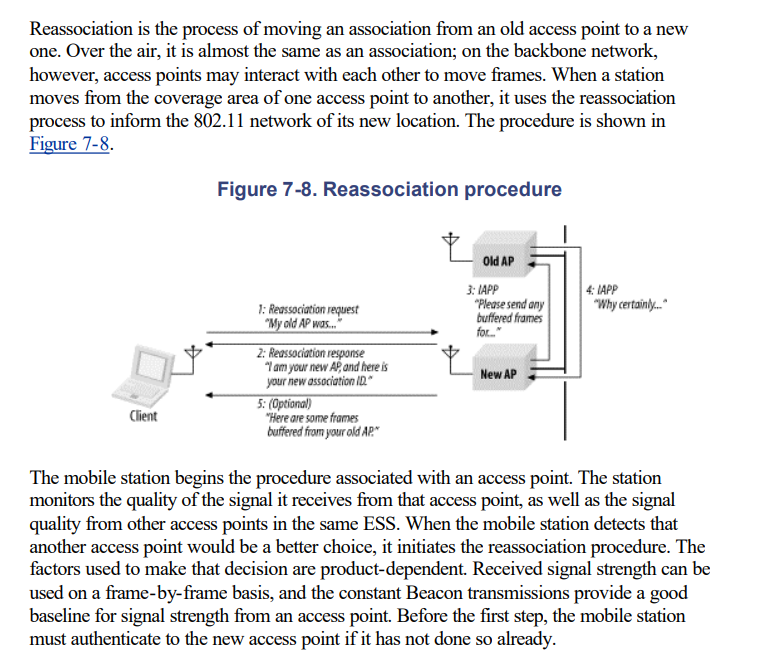
Timer Synchronization
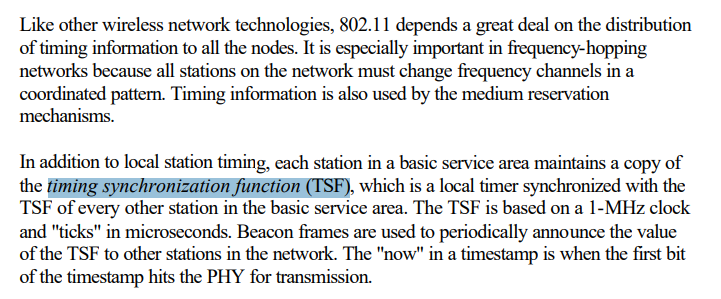
Infrastructure Timing Synchronization
The ease of power management in an infrastructure network is based on the use of access points as central coordinators for data distribution and power management functions. Timing in infrastructure networks is quite similar. Access points are responsible for maintaining the TSF time, and any stations associated with an access point must simply accept the access point's TSF as valid.
When access points prepare to transmit a Beacon frame, the access point timer is copied into the Beacon's timestamp field. Stations associated with an access point accept the timing value in any received Beacons, but they may add a small offset to the received timing value to account for local processing by the antenna and transceiver. Associated stations maintain local TSF timers so they can miss a Beacon frame and still remain roughly synchronized with the global TSF. The wireless medium is expected to be noisy, and Beacon frames are unacknowledged. Therefore, missing a Beacon here and there is to be expected, and the local TSF timer mitigates against the occasional loss of Beacon frames.
IBSS Timing Synchronization
IBSSs lack a central coordination point, so the Beacon process is distributed.
